While Outdoor Education draws in staff that has a passion for being outdoors, working with students, and understanding the natural sciences, one of the continual challenges for us at High Trails is finding new and innovative ways to provide opportunities for our staff to grow.
One solution to this problem is to bring in fun and dynamic speakers to get our staff excited about learning. We had this chance recently when Linda Stamer, the Development Director of the Southern California Mountains Foundation (and an expert on bats), came over and gave all of our staff a hands-on presentation about these elusive mammals.
Here’s what we learned…
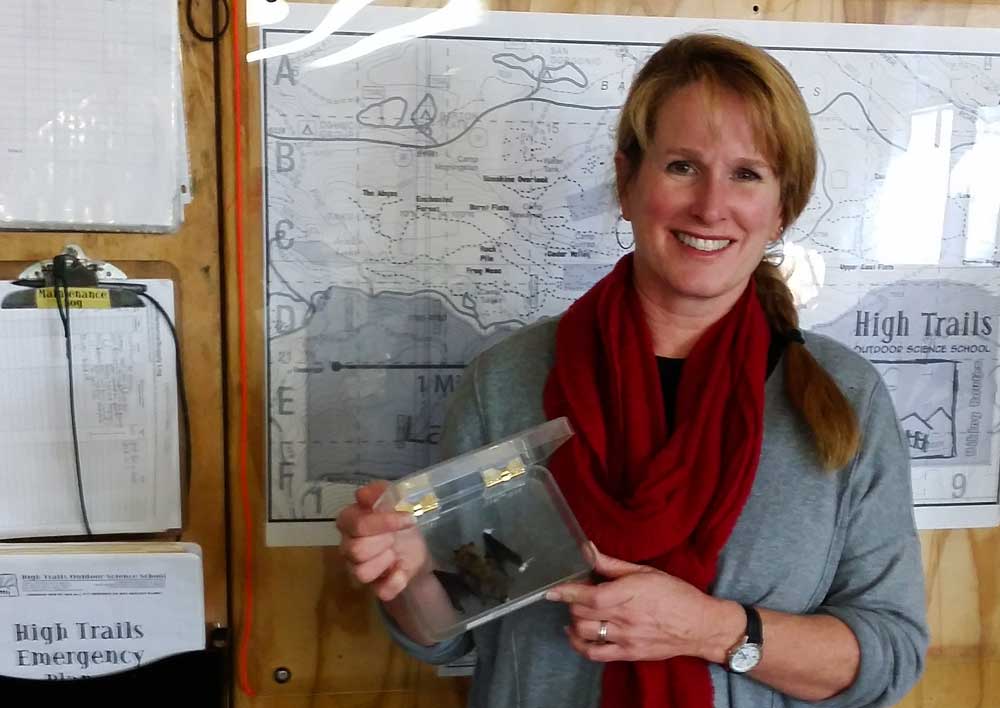
Hi, my name is Linda. And I know bats.
Bats are MISUNDERSTOOD
Linda explained to us the importance of bats in Southern California. First of all, it was important for us to address some stereotypes about bats. The vast majority of bats are insectivores and herbivores/frugivores (not vampires!). The minority of bats carry rabies (0.05% for bats, compared to 30% of cases being raccoons nationwide, and skunks being the largest reported carrier in Southern California). Bats are not “flying rodents;” unlike rats and mice, a bat’s role is not a scavenger; they serve roles as insectivores and pollinators. Their niche has more in common with hummingbirds and butterflies than with rats and mice.
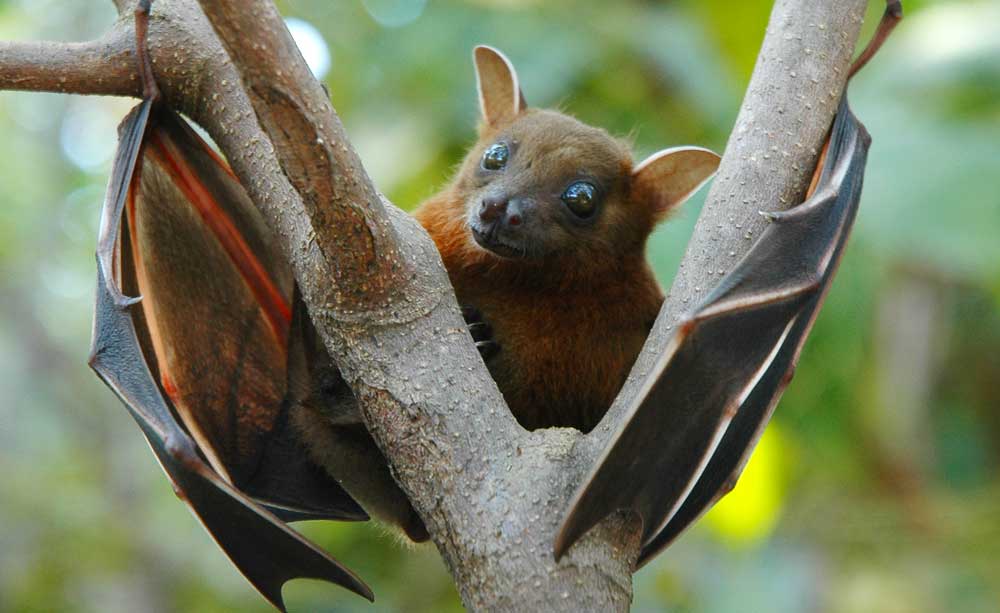
Lesser Short Nosed Fruit Bat
Bats like CALIFORNIA
Moving past the common stereotypes of bats, we were informed about some of the big picture facts about bats. Of the mammal class of animals, bats comprise ¼ of all mammal species, numbering at nearly 1,000 bat species. Of the 1,000 bat species, 25 are found in California and 20 have been found in the Big Bear area of the San Bernardino National Forest.
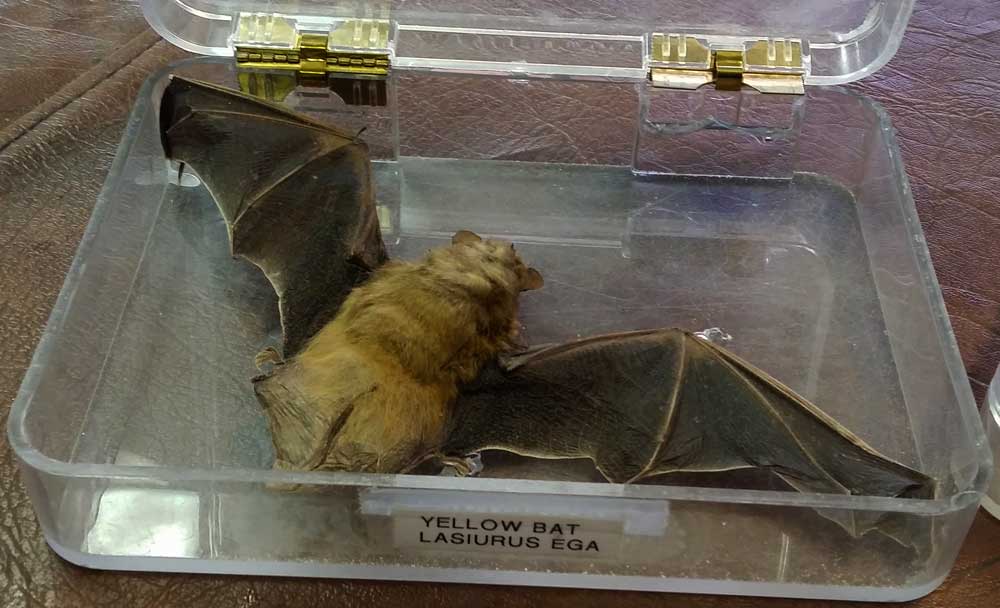
Bats have STYLE
Now, Linda went on to explain the characteristic of bats and their unique style of demonstrating mammalian characteristics. First of all, bats are the only mammals that can fly (not jump or glide, but actually fly). However, bats do not have wings. What we commonly describe as a “bat’s wings” are actually pentadactyl limbs – think of them as extended hands with swaths of flesh between the narrow finger bones. Bats can calculate physics “on the fly” – flying quickly and evading from bumping into each other.
Bats don’t have wings. Really.
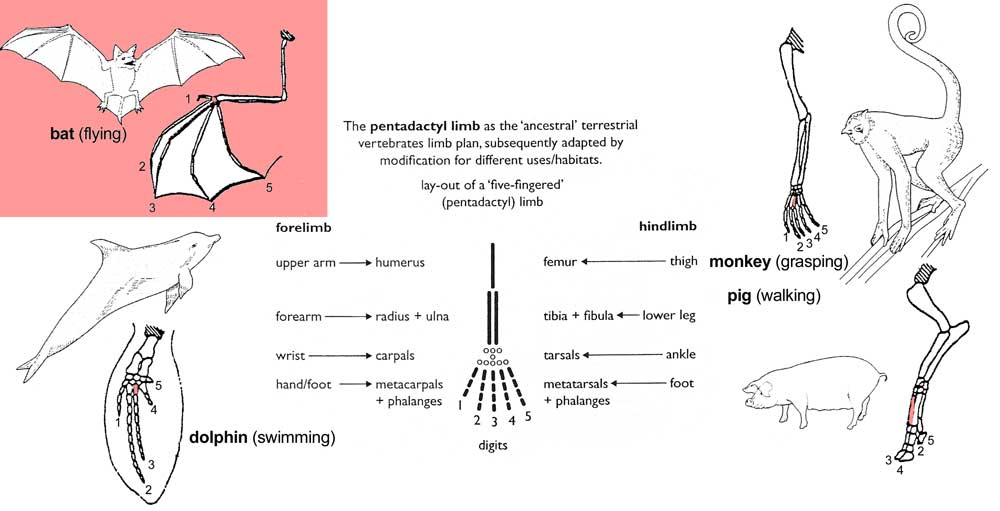 Bats BABYSIT
Bats BABYSIT
Bats have the longest gestation period of all mammals, the mother can take up to 12 months to give birth to a single pup. And while bats live together and communally care for infants (think of it as a type of bat “babysitting”), just like humans and dolphins, mothers can identify their individual offspring.
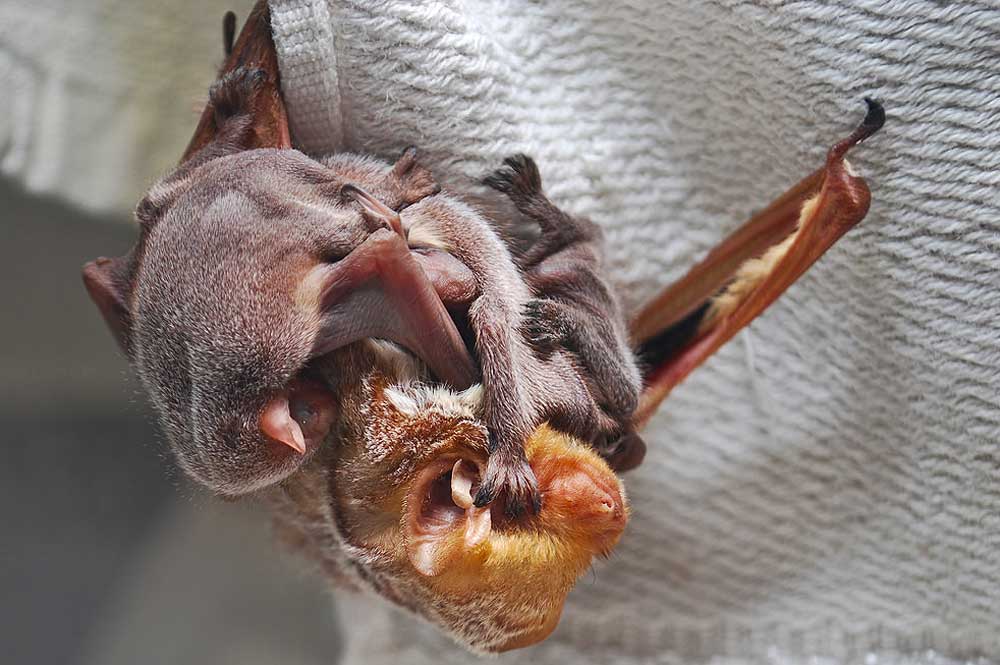
Eastern Red Bat with three babies
Bats are IMPORTANT
70% of bats are insectivores and can eat their body weight in insects. The second largest diet for bats is as frugivores, a primary diet of fruit. By eating insects and fruit, bats serve an essential function for insect population control, pollination, and seed dispersal.
Bats and High Trails
One of the challenges we face as educators is using fun and interesting facts to get students to understand big picture ideas. For instance, a detail like a bat can eat its body weight in insects is a perfect fun fact for students! Students immediately imagine eating their own body weight in food. The challenge, however, is using that fact to get students to make the jump to how humans affect bats, their food sources, and their habitats.
How important are bats in controlling the insect population? How do humans affect bats’ habitats, like forests and caves? What human actions affect bats’ food, like insects and fruits? As Southern Californians, what can we teach our family, friends, and neighbor about the bats in Southern California? Where do they live and how can we support them?
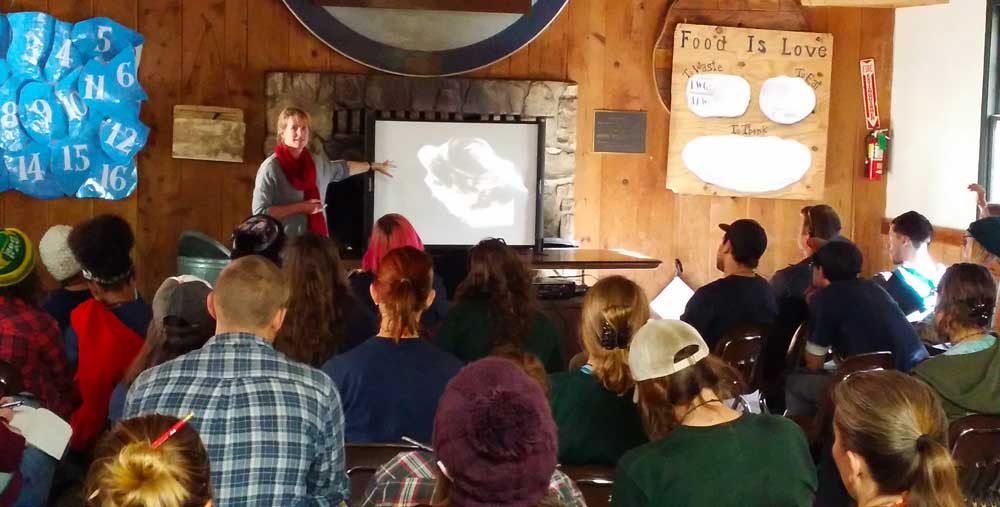
Having experts present to us not only gives us a wealth of “fun facts” but allows us, as educators, to tie those “fun facts” into an educational narrative – something relevant to the daily lives of our students, the big ideas from all the details. Just as bats rely on their communities, they can still identify their individual offspring. Just like we teach hundreds of students, we must develop ways to reach and teach the individual child.

Hi, my name is Shane, and now I know bats, too.
 Special thanks to the Southern California Mountains Foundation for letting Linda spend the afternoon with us. It was positively batty.
Special thanks to the Southern California Mountains Foundation for letting Linda spend the afternoon with us. It was positively batty.
At High Trails Outdoor Science School, we literally force our instructors to write about elementary outdoor education, teaching outside, learning outside, our dirty classroom (the forest…gosh), environmental science, outdoor science, and all other tree hugging student and kid loving things that keep us engaged, passionate, driven, loving our job, digging our life, and spreading the word to anyone whose attention we can hold for long enough to actually make it through reading this entire sentence. Whew…. www.dirtyclassroom.com

Comments are closed.